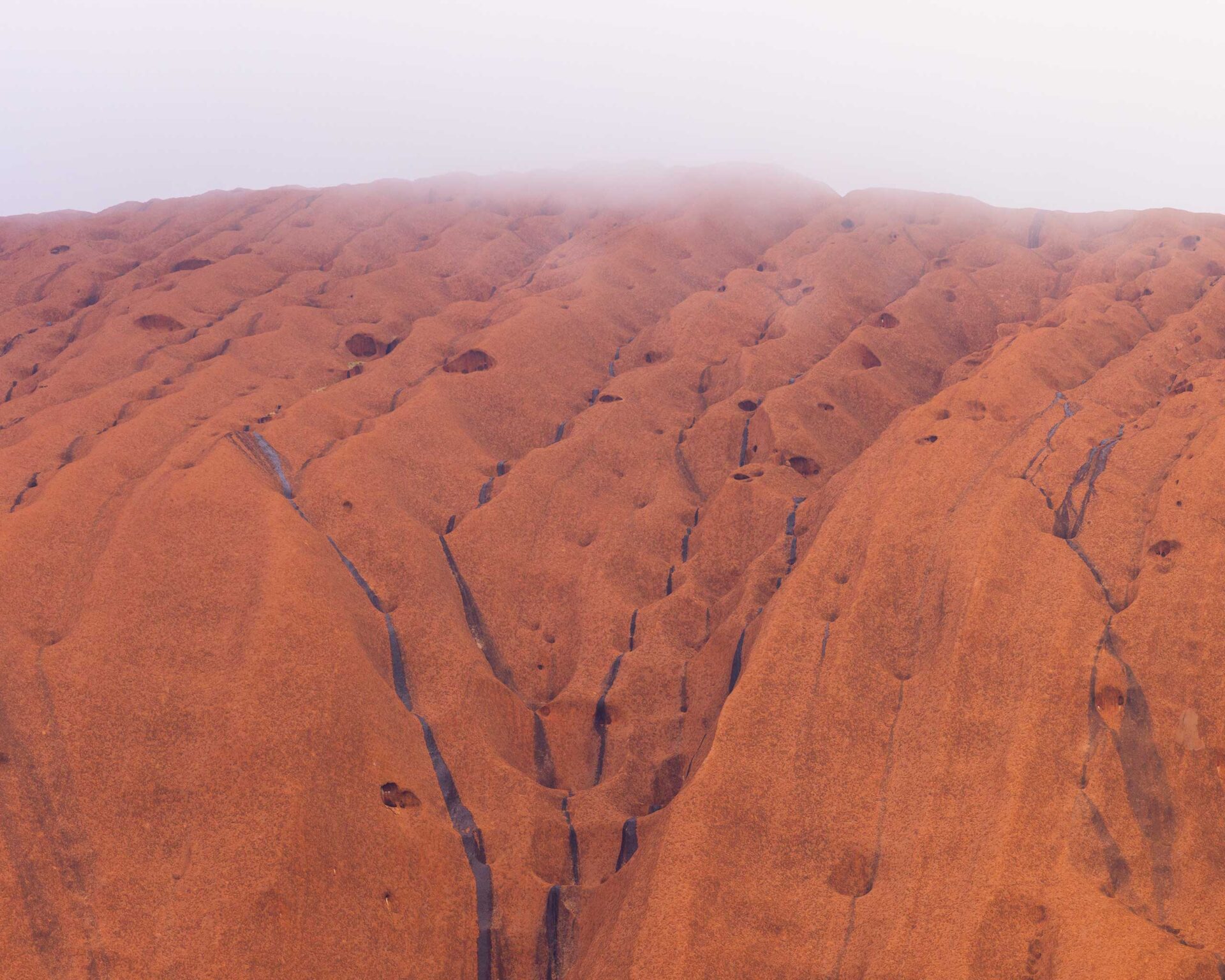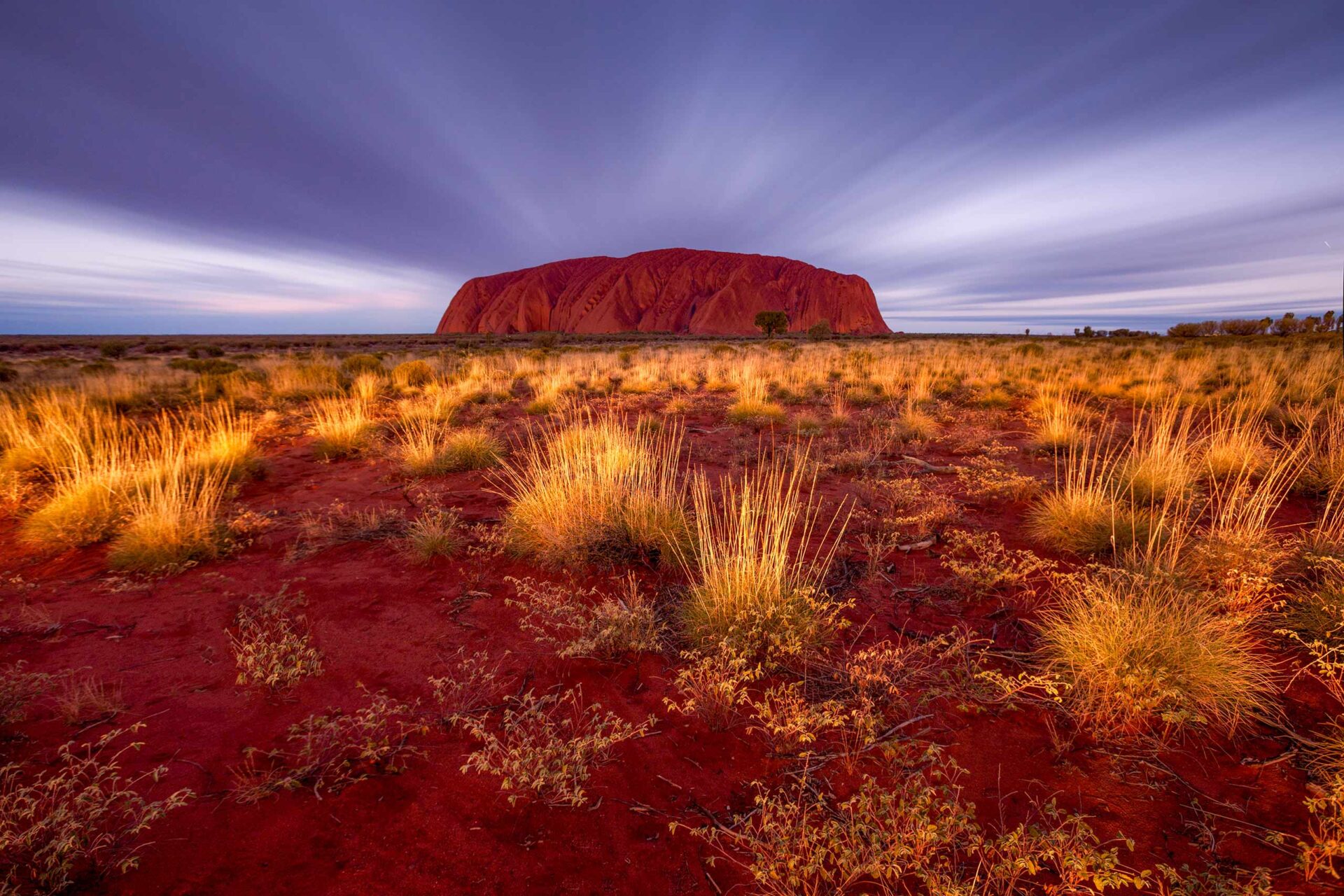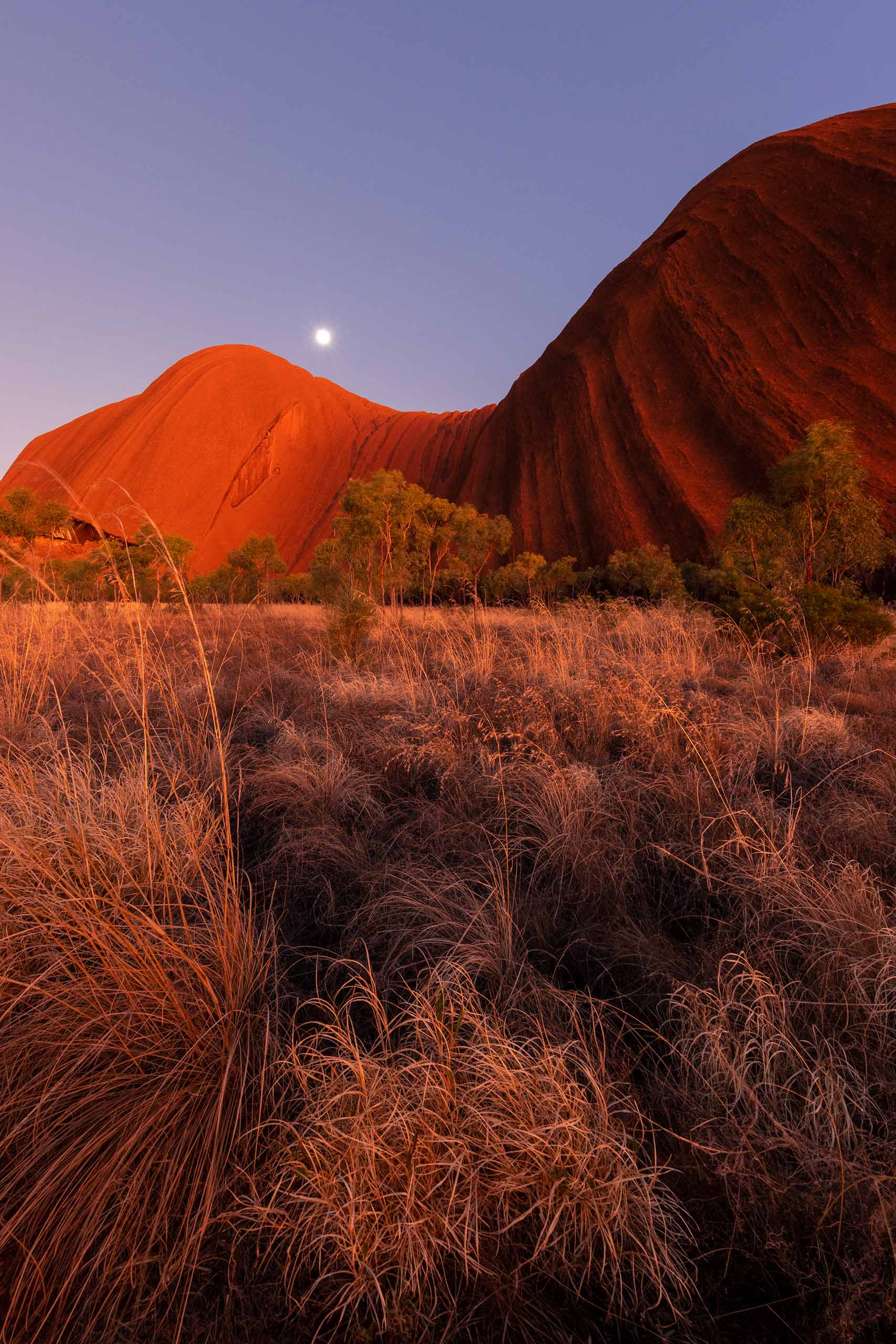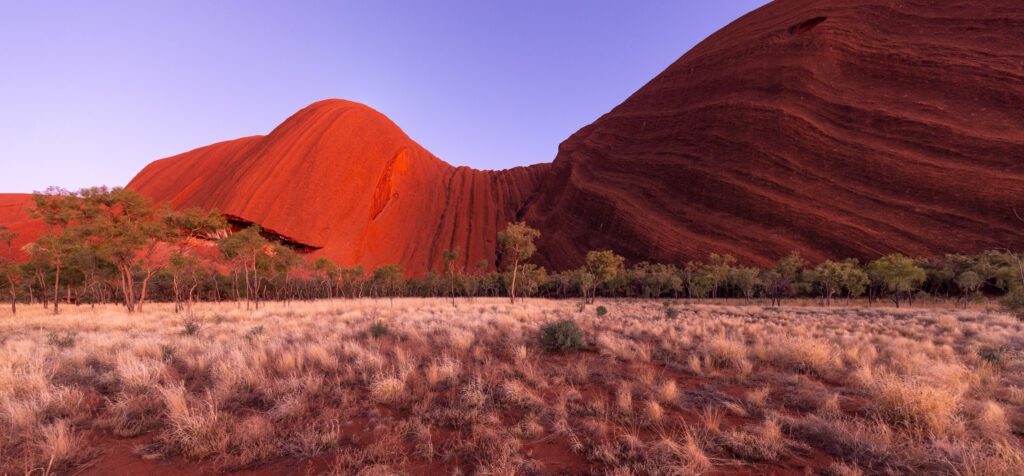Onwards to the big one, Uluru – Kata Tjuta National Park. Both of these big ticket locations have dedicated sunrise and sunset viewing areas which can get fairly crowded so it’s best to arrive early and set up at the spot of your choice. The sunset spot at Uluru in particular gets busy and you’ll want to figure out a foreground perspective here more so than the other viewing areas. I focused on these classic views in 2009 and was fortunate to get outstanding light, including a rainbow over Uluru. Back then, the parks rangers were pretty strict on kicking out visitors soon after sunset but they seemed a bit more relaxed these days. You can get permission or sign up for night tours if you want those starry sky photos.
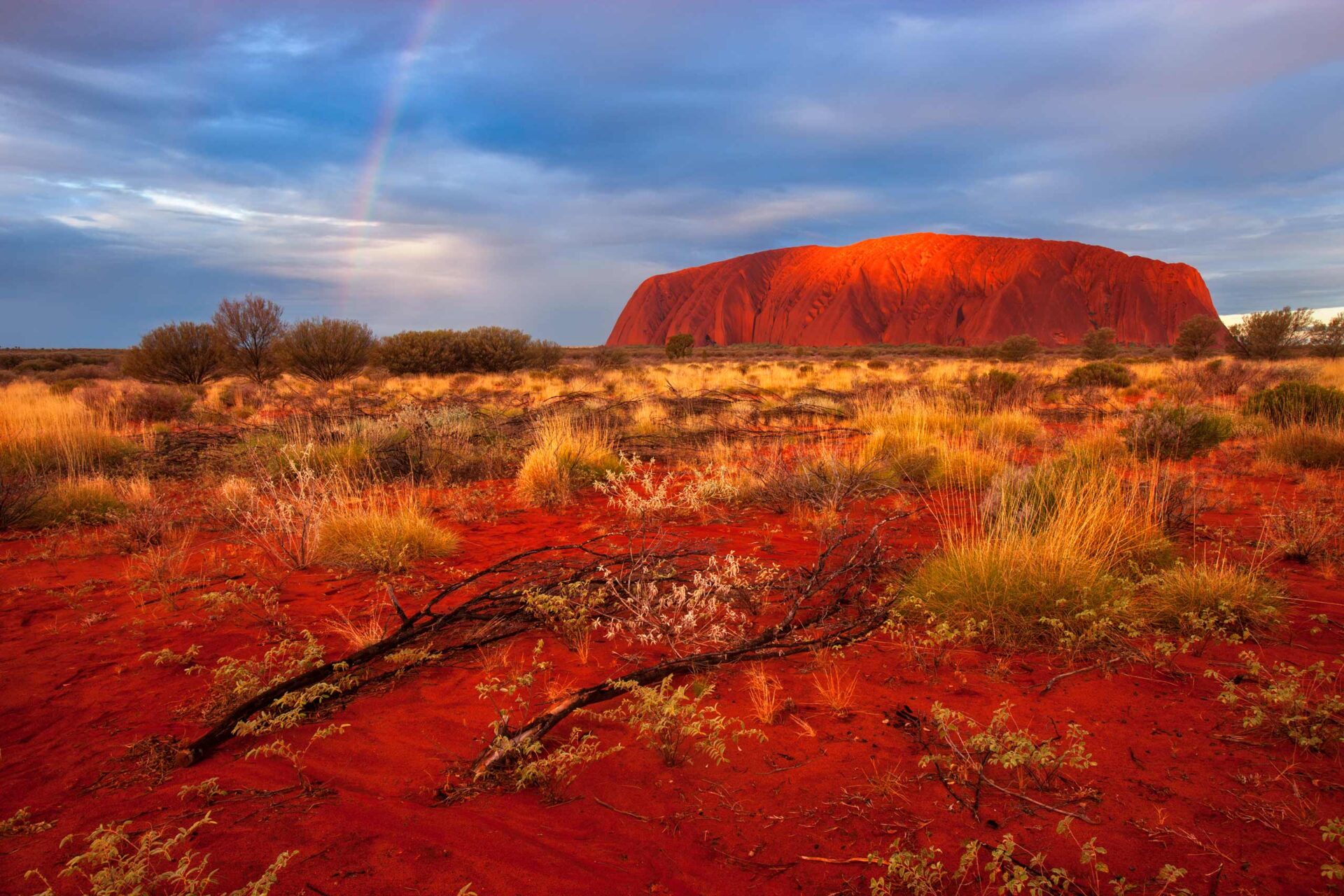
On my most recent trip, I knew that it would be unlikely that I would be lucky enough to experience more spectacular sunrises and sunsets than previously. One morning I did a run around the perimeter of Uluru as a scouting exercise, it’s almost exactly 10km and takes 3-4 hours as a walk. If you stick to the viewing locations like I did on my first trip, you will miss out on a multitude of formations, ridges, coves and patterns which give Uluru so much of its character. This is the reason why I will return again and again to photograph and experience Uluru – Kata Tjuṯa. I still did do a few shoots at the sunrise/sunset areas. The first day at Uluru was shaping up to be a uneventful clear sky sunset. One very important aspect to know about photographing these red rock structures is that the strongest glow on a clear day will be well after the sun is below the horizon. I was pleasantly surprised to have the moon rise from behind Uluru just as this glow was peaking, the unplanned coincidence handing me an unexpected portfolio image.
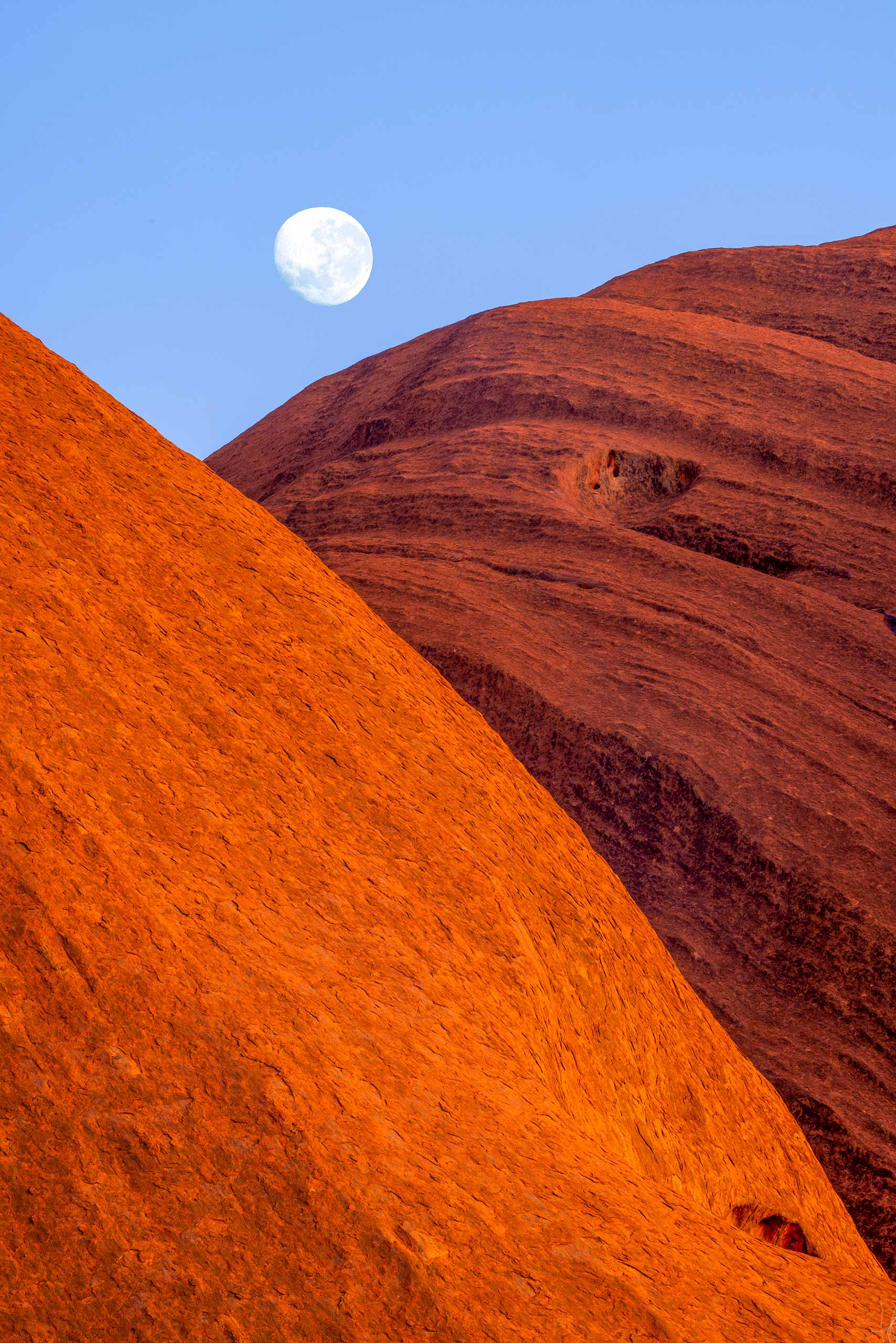
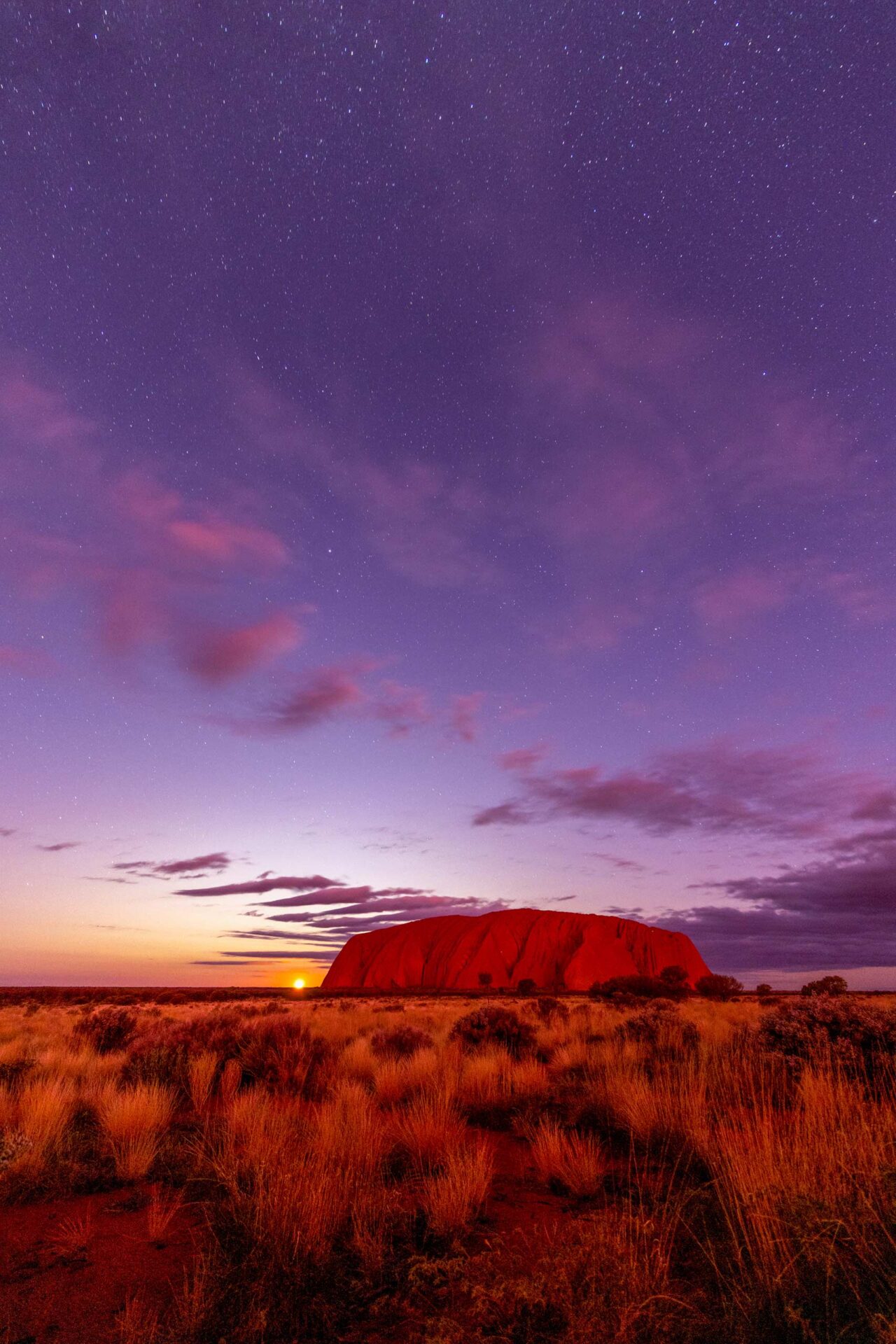
The next sunset was spent at Kata Tjuta. Some moving clouds made for great long exposures but I also made a time lapse on my iPhone which was perfect for the occasion. The next morning was the last time I photographed at one of the ‘known’ locations, the Uluru sunrise viewing spot. The light was dull, overcast and we never saw even the sun appear which made me grumpy and shout at the clouds. I knocked over my tripod in disgust startling some nearby tourists! I still look back and laugh at how upset I was since one of the images I made that day “Moonwalk” is now one of my most treasured Uluru photos. A touch of low lying cloud over the rock and the flat contrast seemed to bring out the ridges and pockmarks in a way people don’t associate with Uluru. It was captured at a focal length of 300mm so I was thankful to have a full range of lenses with me that day.
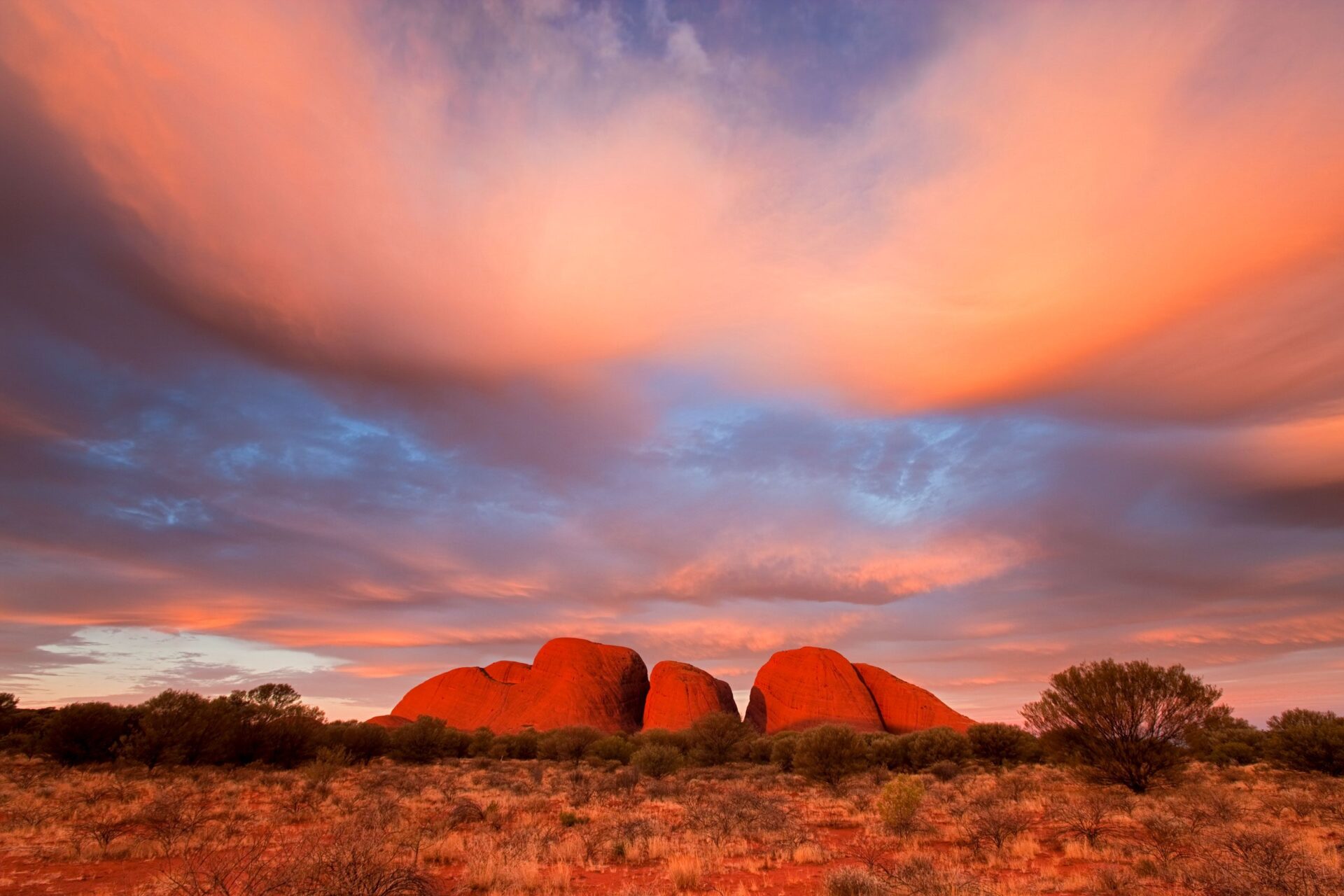
So far I have only visited the Red Centre during the winter months, when it’s more dry and cool. Next time, I’ll consider going during the summer which is extremely hot but perhaps the chance of storms and rain filling the waterholes will make it a different experience.
One thing is for sure – while the dust of the Red Centre might take a few weeks to brush off, the experience will last a whole lot longer.
